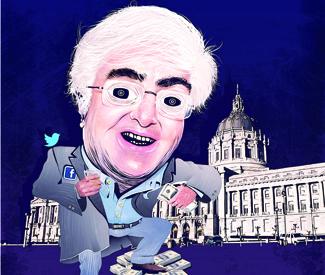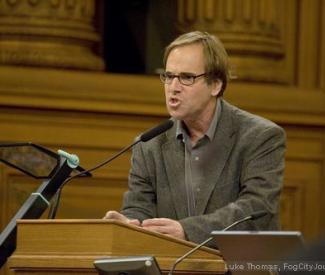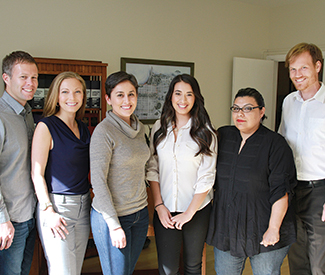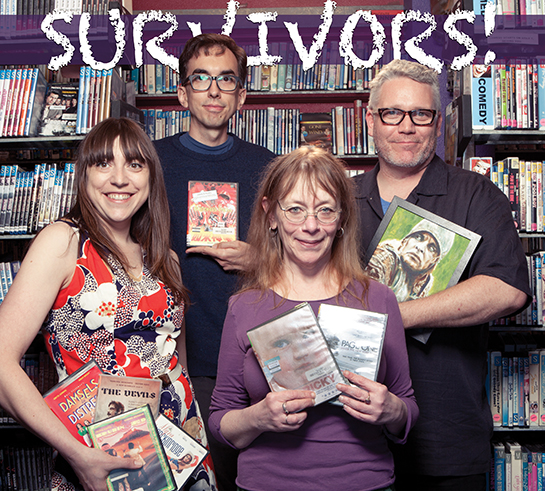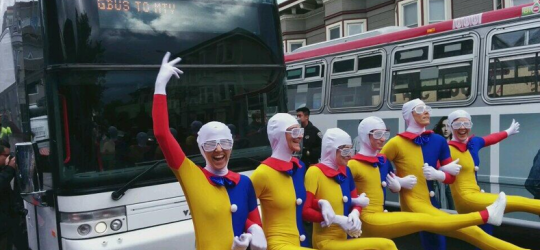steve@sfbg.com
Political tensions over evictions, displacement, real estate speculation, and rapidly rising housing costs in San Francisco are likely to heat up through the summer and autumn as a trio of November ballot measures are debated and combated by what’s expected to be a flood of campaign cash from developers and other real estate interests.
Topping the list is a tax measure to discourage the flipping of properties by real estate speculators. Known generally as the anti-speculation tax — something then-Sup. Harvey Milk was working on at the time of his assassination in 1978 — it was the leading goal to come out of a citywide series of tenant conventions at the beginning of this year (see “Staying power,” 2/11/14).
“To be in a position to pass the last thing Harvey Milk worked on is a profound opportunity,” AIDS Housing Alliance head Brian Basinger told us, arguing the measure is more important now then ever.
The measure has been placed on the ballot by Sups. John Avalos, David Campos, Jane Kim, and Eric Mar and is scheduled for a public hearing before the Board of Supervisors Rules Committee on July 10 at 2pm.
“It’s an absolutely key issue for San Francisco right now. Passing this measure will create a seismic shift in what we’re seeing with evictions and displacement in the city,” Sara Shortt, director of the Housing Rights Committee, told the Guardian.
The measure creates a supplemental surcharge on top of the city’s existing real estate transfer tax, a progressive rate ranging from a 24 percent tax on the sale of a property within one year of its purchase to 14 percent if sold between four and five years later.
In addition to levying the tax, the measure would also give the Board of Supervisors the power to waive that tax “subject to certain affordability-based restrictions on the occupancy of the real property,” giving the city leverage to expand and preserve deed-restricted affordable housing.
Meanwhile, there’s been a flurry of backroom negotiations surrounding the City Housing Balance Requirement measure sponsored by Sup. Jane Kim, which would require market rate housing projects to get a conditional use permit and be subjected to greater scrutiny when affordable housing falls below 30 percent of total housing construction (with a number exemptions, including projects with fewer than 24 units).
That measure is scheduled for a hearing by the Rules Committee on July 24 and, as an amendment to the City Charter, it needs six votes by the Board of Supervisors to make the ballot (the anti-speculation tax is an initiative that requires only the four supervisorial signatures that it now has).
Mayor Ed Lee and his allies in the development community responded to Kim’s measure by quickly cobbling together a rival initiative, Build Housing Now, which restates existing housing goals Lee announced during his State of the City speech in January and includes a poison pill that would invalidate Kim’s housing balance measure.
Together, the measures will draw key battle lines in what has become the defining political question in San Francisco these days: Who gets to live here?
COMBATING SPECULATORS
In February, Mayor Lee and his allies in the tech world, most notably venture capitalist Ron Conway, finally joined housing and other progressive activists in decrying the role that real estate speculators have played in the city’s current eviction and displacement crisis.
“We have some of the best tenant protections in the country, but unchecked real estate speculation threatens too many of our residents,” Lee said in a Feb. 24 press release announcing his support for Sen. Mark Leno’s Ellis Act reform measure SB 1439. “These speculators are turning a quick profit at the expense of long time tenants and do nothing to add needed housing in our City.”
The legislation, which would have prevented property owners from evicting tenants using the Ellis Act for at least five years, failed in the Legislature last month. So will Lee honor his own rhetoric and support the anti-speculation tax? His Communications Director Christine Falvey said Lee hasn’t yet taken a position on the measure, but “the mayor remains very concerned about real estate speculators.”
Peter Cohen of the Council of Community Housing Organization said Lee and his allies should support the measure: “It seems so clearly aligned with the same intent and some of the same mechanics as Ellis Act reform, which had the whole city family behind it.”
“I think it would be very consistent with their position on Ellis Act reform to support the anti-speculation tax,” Shortt told us. “If the mayor and tech companies went to bat for the anti-speculation tax, and not against it, that would show they have real concern about displacement and aren’t just giving it lip service.”
Conway’s pro-tech group sf.citi didn’t returned Guardian calls on the issue, nor did San Francisco Planning and Urban Research Association, but their allies in the real estate industry strongly oppose it.
“As Realtors, our goals are to increase housing availability and improve housing affordability,” San Francisco Association of Realtors CEO Walk Baczkowski told the Guardian. “We don’t believe the proposal from Sup. Mar, which is essentially a tax on housing, will accomplish either of those goals.”
But supporters of the measure say real estate speculation only serves to drive up housing costs.
“We have been successful at bringing people around on the issue of real estate speculation,” Basinger told us. “But of course, there will be financed opposition. People will invest their money to protect their interests.”
“We know it’s going to be a fight and we’ll have to put in a lot of resources,” Shortt said, adding that it’s a fight that tenant activist want to have. “Part of what fuels all of this [displacement] is the rampant real estate speculation. We can’t put profits above people.”
MAYOR’S MEASURE
Falvey denies that Lee’s proposal is designed simply to negate Kim’s measure: “Build Housing Now specifically asks the voters to adopt as official city policy the Mayor’s Housing Plan to create 30,000 new homes by 2020 — the majority within reach of low, moderate, and middle income residents. This is not a reaction, but a proactive measure that lets voters weigh in on one of the mayor’s most important policy priorities.”
Yet the most concrete thing it would do is sabotage the housing balance measure, an intention it states in its opening words: “Ordinance amending the Planning Code to prohibit additional land use requirements such as conditional use authorizations, variances or other requirements on housing projects…based on a cumulative housing balance ratio or other similar criteria related to achieving a certain ration of affordability.”
Beyond that, it would have voters validate Lee’s housing goal and “urge the Mayor to develop by December 31, 2014 a Housing Action Plan to realize this goal.” The measure is filled with that sort of vague and unenforceable language, most of it designed to coax voters into thinking it does more than it would actually do. For example, it expands Lee’s stated goal of 30 percent of that new housing being affordable by setting a goal of “over 50 percent within reach of low and middle income households.”
But unlike most city housing policies that use the affordable housing threshold of those earning 120 percent of area median income (AMI) and below, Lee’s measure eschews that definition, allowing him and his developer allies to later define “middle income households” however they choose. Falvey told us “he means the households in the 50-150 percent of AMI range.”
The measure would also study the central premise of Mayor Lee’s housing policy, the idea that building more market rate housing would bring down the overall price of housing for everyone, a trickle-down economic argument refuted by many affordable housing advocates who say the San Francisco housing market just doesn’t work that way because of insatiable and inelastic demand.
“Within 60 days of the effective date of this measure, the Planning Department is directed and authorized to undertake an economic nexus analysis to analyze the impact of luxury development on the demand for middle income housing in the City, and explore fees or other revenue sources that could help mitigate this impact,” the measure states.
Shortt thinks the mayor’s measure is deceptive: “It’s clever because for those not in the know, it looks like a different way to solve the problem.” But she said the housing balance measure works well with the anti-speculation tax because “one way to keep that balance is to make sure we don’t lose existing rental stock.”
And advocates say the anti-speculation tax is the best tool out there for preserving the rental housing relied on by nearly two-thirds of city residents.
“It’s the best measure we have going now,” Basinger said of the anti-displacement tax. “Mayor Ed Lee and his tech supporters were unable to rally enough support at the state level to reform the Ellis Act, so this is it, folks.”




